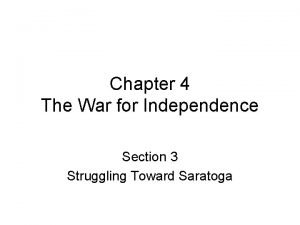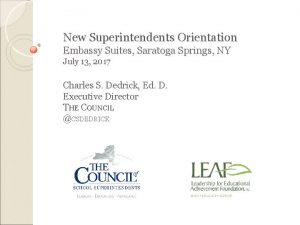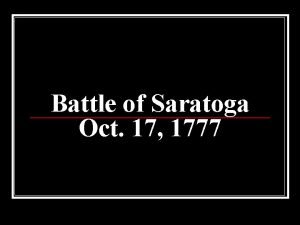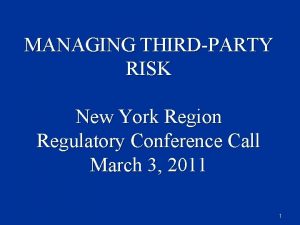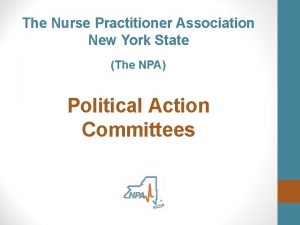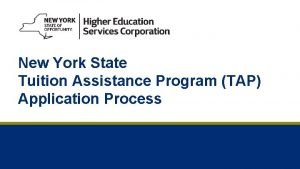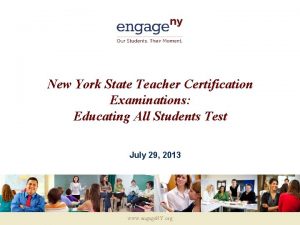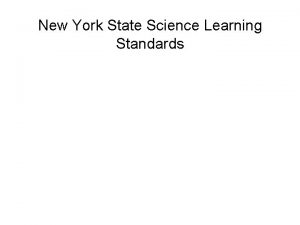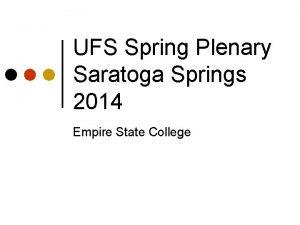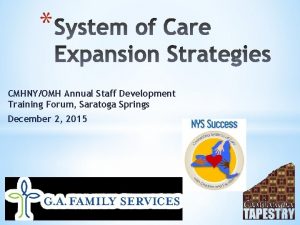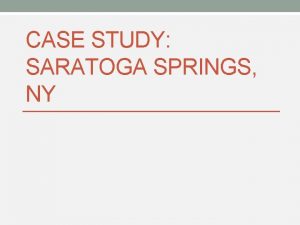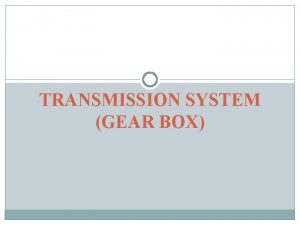HESCNEW YORK STATE GEAR UP CONFERENCE SARATOGA SPRINGS















- Slides: 15

. HESC/NEW YORK STATE GEAR UP CONFERENCE SARATOGA SPRINGS, NEW YORK APRIL 18, 2016 BUILDING COMMUNITY TO ACHIEVE STUDENT SUCCESS DR. HAZEL M. CARTER Chair, Department of Leadership and Special Education Associate Professor of Educational Leadership School of Education The City College of New York/CUNY hcarter@ccny. cuny. edu

Each Child Should Be Prepared to Enter College • Requires ample preparation in lower grades • Success in college is directly related to success in earlier grades • Each child should have the necessary tools to complete high school and enter college academically prepared • A college degree is the major entrance to profitable employment

Importance of the Community in Student Success • A community of stakeholders… inclusive of • Higher education institutions • School systems • Community-based organizations • Parents • Business and government agencies

Importance of the Community in Student Success • The community…………… Educators should change the way they currently operate and think of the community as a logical partner in bringing about success for students, their families, and school staff (Carter, 2013).

What Students Say They Need • • • Peer and mentoring programs Teacher training on the needs of minority students Programs for Parental Involvement Student programs for diversity issues Motivation for higher levels of success Skill building programs • Test-taking skills, tutoring, leadership development, time management

Transitioning to High School Features of successful transitions Smaller learning communities or student cohorts Providing greater support from teachers Providing information to students and parents about high school • Providing students with social support • •

• Are you going to college, if so why? • How will you make the decision about which college to attend? • How can your parents help you make the decision? • What concerns do you have about going to college?

Bridging the Gaps: High School to College STUDENT You are tenth grader whose friends are talking about college. • Are you going to college, if so why? • If you are not going to college, explain your decision. • How will you make the decision about which college to attend? • How can your current school help you make this decision? • How can your parents help you make the decision? • What concerns do you have about going to college? • How can those concerns disappear? PARENT Your tenth grade son/daughter is talking about going to college. • Did you go to college? • What do you see as the perfect college for your child? • How do you go about choosing a college? • List the factors that are most important in helping you decide. • What role should your child’s current school play in your decision? • After a decision is made, what can you go to prepare your child for college? Source: Carter, H. M. (2013). Creating Effective Community Partnerships for School Improvement: A Guide for School Building Leaders. London and New York: Routledge.

Bridging the Gaps: High School to College CLASSROOM TEACHER You are a tenth grade teacher whose students are concern about going to college. • How will you assist them in making the best choice of a college? • Would you steer some of your students to the community college? Explain. • How will you utilize time in class to deal with this issue? Give examples. • Once, they have selected a college, how will you prepare them for entrance? GUIDANCE COLLEGE/COLLEGE ADVISOR You are a guidance counselor/college advisor whose students are concern about going to college. • How will you assist them in making the best choice of a college? • Would you steer some of your students to the community college? Explain. • How will you work with the classroom teacher to support students? Give examples. • Once, they have selected a college, how will you prepare them for entrance? Source: Carter, H. M. (2013). Creating Effective Community Partnerships for School Improvement: A Guide for School Building Leaders. London and New York: Routledge.

Bridging the Gaps: High School to College ADMINISTRATOR You are a high school principal who received a grant to prepare your entire student body for college. • What short term and long term strategies will you put in place to ensure that their choice of and transition to college is smooth and effective for them, their parents and teachers? • How would you deal with the students who do not want to go to college? Source: Carter, H. M. (2013). Creating Effective Community Partnerships for School Improvement: A Guide for School Building Leaders. London and New York: Routledge.

Involving More Minority Males in College Prep Activities Data from the La. GCC GEAR UP program revealed that the majority of participants were female. 1. Convene a study group to investigate this problem. 2. What role does mentoring play in your suggestions? 3. How can a social worker be involved in this project? 4. Who from the community should be included?

La. GCC GEAR UP Program • • • Action Plan for Student Progress through Grades Creating Structures for Community Involvement Bridging the Gaps: Transitioning to HS and to College Importance of Evaluation to Program Planning Keeping Students on Track The Hold Over Student

• A clear understanding of proposed services and their implementation • Support of teachers • More first year emphasis of “selling GEAR Up” to students • Earlier focus on the “holdover student” • Sharing more success stories • Working closely with support staff • Engage community partners for support (Carter, 2013)

Strategies for Partnership Building • Create a vision. • Collect data on the schools involved and conduct a review of exemplary practices. • Share vision with possible partners. • Identify key constituents who are committed to the vision and have common areas of concern. • Identify a program evaluator to design an evaluation plan for the project. • Organize a retreat to bring interested parties together to develop implementation strategies for all phases of the project. • Identify the roles and responsibilities of each partner. • Create a governance system (advisory board, teams, etc), set up a committee to draft a mission statement and plan budget allocations.

• Issues Facing Educators • Identifying Key Constituents as Partners • Creating Structures for Community Involvement • The Collaborative Leader and Partnership Building • Keeping Students on Track: Customization through Collaboration • Bringing the Gaps: Higher Education Institutions and the School System
 Difference between internal and external gear pump
Difference between internal and external gear pump Gears and torque
Gears and torque Saratoga battle date
Saratoga battle date Saratoga battle date
Saratoga battle date Chapter 4 section 3 struggling toward saratoga
Chapter 4 section 3 struggling toward saratoga Chapter 4 section 3 struggling toward saratoga
Chapter 4 section 3 struggling toward saratoga Embassy suites saratoga ny
Embassy suites saratoga ny British surrender at saratoga
British surrender at saratoga Whats the battle of saratoga
Whats the battle of saratoga Third party risk management conference 2019 new york
Third party risk management conference 2019 new york Chapter 10 hunger games questions
Chapter 10 hunger games questions New york nurse practitioner association
New york nurse practitioner association Tap application status
Tap application status New york state teacher certification exams
New york state teacher certification exams New york state learning standards science
New york state learning standards science 2018 nys math test
2018 nys math test





